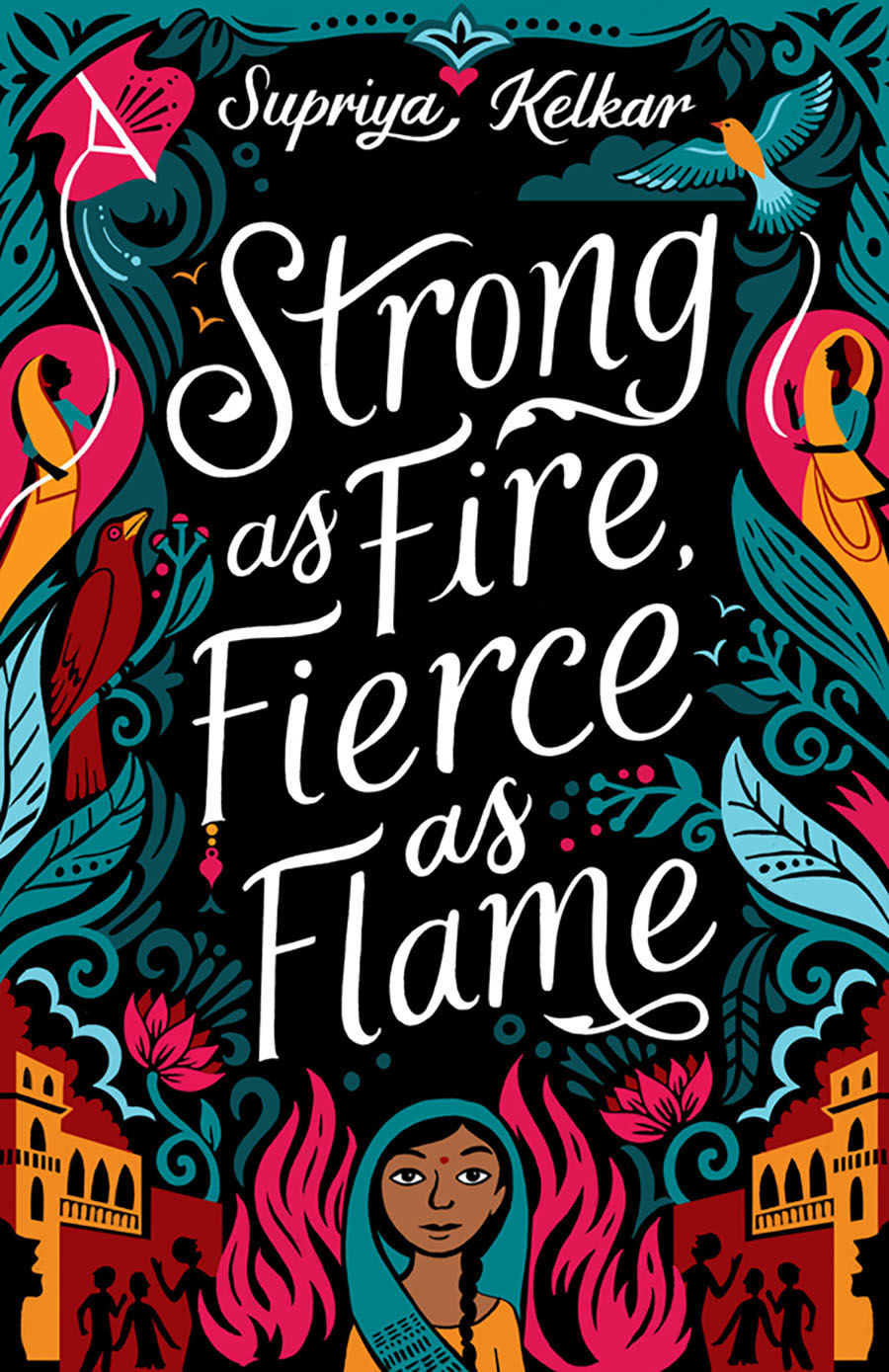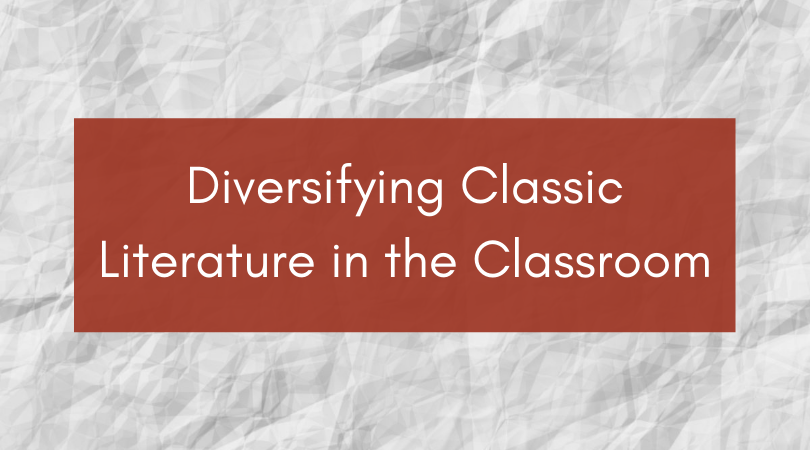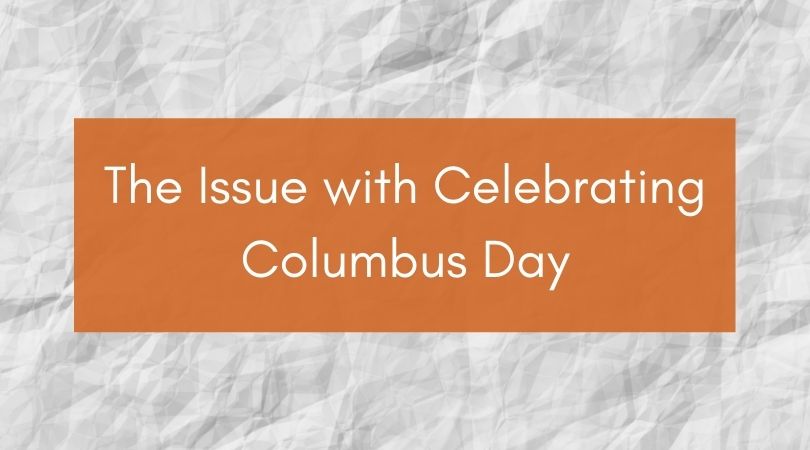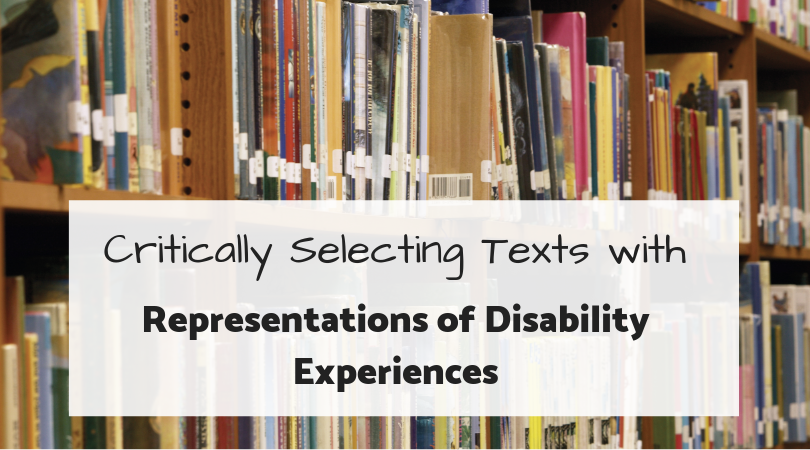In this guest post, author Alessandra Narváez Varela talks about her journey growing into her bilingualism and how that grew into her latest novel, Thirty Talks Weird Love.
Tag Archives: guest post
Diversifying Classic Literature in the Classroom: A Student’s Perspective
In this blog post by Kiana Low, our Lee & Low summer intern, she shares the need for educators to create space for more diverse, contemporary books and voices to balance the “classics.”
The classics. If you attended high school in the United States, your mind may immediately go to Shakespeare, Jane Eyre, or maybe even Nathaniel Hawthorne, whose The Scarlet Letter has been a Puritan warning against female sexuality for nearly two centuries. These are the old guard of high school English classics—literature included in reading lists for generations. There are also “modern classics”—you may think of J.D. Salinger, Harper Lee, and John Steinbeck.
Decolonize Your Bookshelf: Supriya Kelkar’s New Book Illuminates the Brutal Realities of Colonialism in India
 In this guest blog post, author Supriya Kelkar writes about the story behind her latest middle grade novel Strong as Fire, Fierce as Flame as well as the need to have conversations surrounding the atrocities committed in the name of colonialism and whose story is routinely told and whose story is left out.
In this guest blog post, author Supriya Kelkar writes about the story behind her latest middle grade novel Strong as Fire, Fierce as Flame as well as the need to have conversations surrounding the atrocities committed in the name of colonialism and whose story is routinely told and whose story is left out.
When I was growing up, I never got to see myself in a book. Although I’m sure books with South Asian American characters, written by South Asian Americans, were being written, they weren’t being published. Because of this erasure, I never thought my story mattered.
The Issue with Celebrating Columbus Day
In this blog post by Kiana Low, our Lee & Low fall intern, she shares the history of Columbus’s conquest, examines the implications of celebrating Columbus Day, and highlights the importance of Indigenous People’s Day. This piece is based on an essay she wrote in 7th grade, entitled “Columbus, Not to be Celebrated”, which won a Scholastic Gold Key award.
In the past few decades, Christopher Columbus has become shrouded by controversy. While there probably won’t be any parade floats this Columbus Day we should ask ourselves: what are we really celebrating? The success of the supposed great explorer often taught in American classrooms, or a gruesome conqueror? Continue reading
How to Critically Select Children’s Books with Representations of Disability Experiences
In this guest blog post, Monica Kleekamp, a PhD candidate in the department of Learning, Teaching & Curriculum at the University of Missouri-Columbia, discusses the importance of inclusive children’s literature and how to critically select texts with regards to representations of disability experiences.
What is inclusive children’s literature? What is it not? Why is it important?
As students look to the shelves in their classrooms and school libraries, they seek representations of themselves—characters who look, feel, and experience the world in similar ways. The field of children’s literature continues to problematize the ways our bookshelves perpetuate representations of white, cisgender, heterosexual, and middle-class characters. A term often added to the end of this list is “able.”
Inclusive children’s literature that features characters who are either physically and/or intellectually diverse—characters who have been labeled as disabled—remain few and far between. Additionally, those texts that do exist often follow tropes of pity or dehumanization. These texts have also been heavily critiqued for their over-representation of white male characters who access prosthetics. Continue reading
How to Turn a Quiet Author Event into a Big Success
In this joint guest post, librarian Jane Levitan of ![]() the Martinsburg-Berkeley County Public Libraries and author/illustrator Lulu Delacre give their takes on a quiet event that turned into a great success. Continue reading
the Martinsburg-Berkeley County Public Libraries and author/illustrator Lulu Delacre give their takes on a quiet event that turned into a great success. Continue reading
Selection Is Privilege
 Amy Koester is the Youth & Family Program Coordinator at Skokie Public Library, where she
Amy Koester is the Youth & Family Program Coordinator at Skokie Public Library, where she ![]() selects fiction for youth birth through teens and oversees programming aimed at children through grade 5. She is the chair of the ALSC Public Awareness Committee, and she manages LittleeLit.com and is a Joint Chief of the Storytime Underground. Amy has shared her library programs, book reviews, and musings on librarianship on her blog The Show Me Librarian since early 2012.
selects fiction for youth birth through teens and oversees programming aimed at children through grade 5. She is the chair of the ALSC Public Awareness Committee, and she manages LittleeLit.com and is a Joint Chief of the Storytime Underground. Amy has shared her library programs, book reviews, and musings on librarianship on her blog The Show Me Librarian since early 2012.
This post originally appeared on her blog The Show Me Librarian, and is cross-posted with her permission.
Diversity in Children’s Literature and the Legacy of Pura Belpré
![]()
 Marilisa Jimenez-Garcia, research associate at the Center for Puerto Rican Studies, Hunter College, CUNY, graduated from the University of Florida with a PhD in English, specializing in American literature/studies, nationalism, and children’s and young adult literature. Marilisa is also a National Council for Teachers of English (NCTE) Cultivating New Voices Among Scholar of Color Fellow. She is currently working on a manuscript on U.S. Empire, Puerto Rico, and American children’s culture. She is the recipient of the Puerto Rican Studies Association Dissertation Award 2012 and the University of Florida’s Dolores Auzenne Dissertation Award. Her scholarly work appears in publications such as Changing English: Studies in Culture and Education and CENTRO Journal. She has also published reviews in International Research in Children’s Literature and Latino Studies. Continue reading
Marilisa Jimenez-Garcia, research associate at the Center for Puerto Rican Studies, Hunter College, CUNY, graduated from the University of Florida with a PhD in English, specializing in American literature/studies, nationalism, and children’s and young adult literature. Marilisa is also a National Council for Teachers of English (NCTE) Cultivating New Voices Among Scholar of Color Fellow. She is currently working on a manuscript on U.S. Empire, Puerto Rico, and American children’s culture. She is the recipient of the Puerto Rican Studies Association Dissertation Award 2012 and the University of Florida’s Dolores Auzenne Dissertation Award. Her scholarly work appears in publications such as Changing English: Studies in Culture and Education and CENTRO Journal. She has also published reviews in International Research in Children’s Literature and Latino Studies. Continue reading




